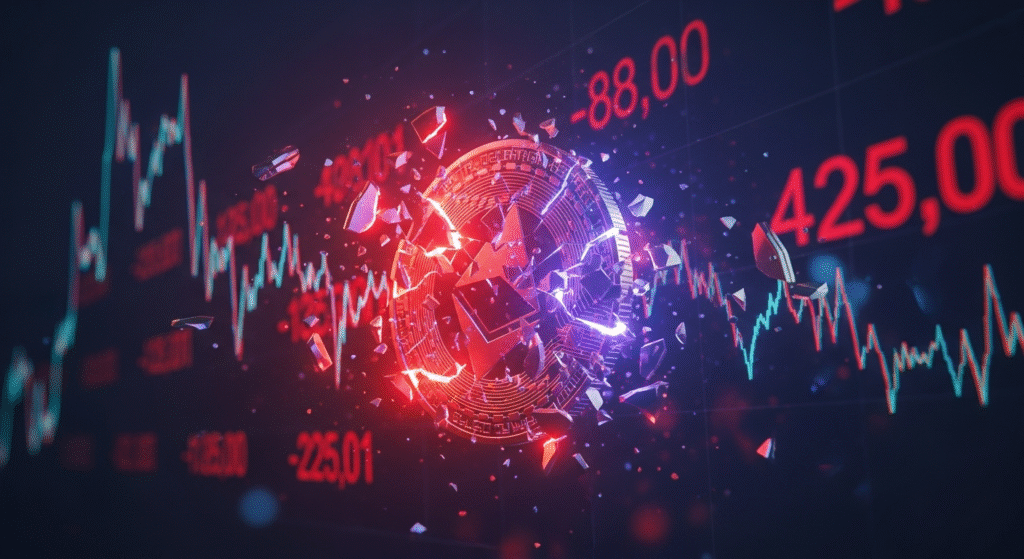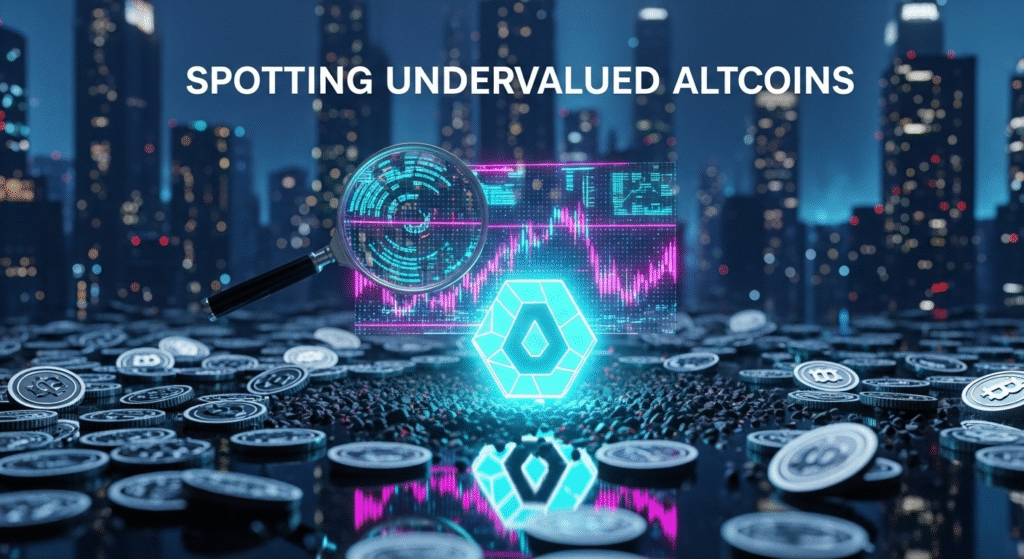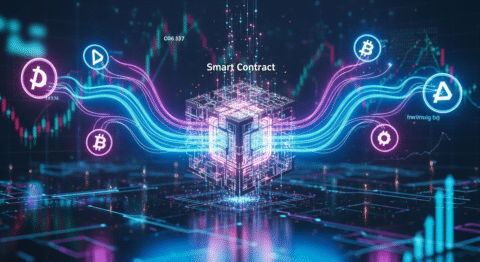.
Want to spot the next crypto gem? Learn how to find undervalued altcoins with 5 top strategies to boost your portfolio. Discover smart investment tips now!
Are you tired of missing out on the next big cryptocurrency breakout? In a market teeming with innovative projects and speculative frenzy, identifying genuinely undervalued assets before they skyrocket can feel like searching for a needle in a digital haystack. With the cryptocurrency landscape constantly evolving, understanding how to find undervalued altcoins is no longer just a strategy; it’s a necessity for any serious investor looking to maximize returns and build a robust portfolio..
Crypto Market Overview: Navigating the Shifting Altcoin Seas
The cryptocurrency market is a dynamic behemoth, characterized by its rapid price swings, emerging trends, and the constant innovation that breathes life into new digital assets. Currently, we’re witnessing a significant resurgence in altcoin activity, with many digital currencies showing strong growth potential beyond Bitcoin’s dominance. The narrative around meme coins, while often driven by social media sentiment, has also demonstrated the power of community and viral marketing to create substantial initial valuations – though often with a higher degree of risk. Airdrops continue to be a popular method for new projects to distribute tokens and build a user base, presenting opportunities for early adopters to acquire assets with minimal initial investment.
Key market indicators suggest a growing investor appetite for diversification beyond the established cryptocurrencies. We’re seeing increased interest in layer-1 blockchains, decentralized finance (DeFi) protocols, and innovative solutions to real-world problems. However, the volatility remains a defining characteristic. Market sentiment can shift dramatically based on regulatory news, technological developments, and macroeconomic factors. The total market capitalization of cryptocurrencies, and specifically the altcoin market cap, often serves as a barometer for overall investor confidence, with rising altcoin dominance signaling a potential shift in capital away from Bitcoin. Analyzing these broader trends is crucial before diving into specific projects.

The Core Concept: Understanding the Altcoin Ecosystem
To effectively find undervalued gems, we must first understand the foundational elements of the cryptocurrency world beyond Bitcoin.
What Are Altcoins?
Altcoins, a portmanteau of “alternative coins,” represent any cryptocurrency other than Bitcoin. Launched after Bitcoin’s inception in 2009, altcoins were often created to improve upon Bitcoin’s perceived limitations or to explore new use cases for blockchain technology. They range from established, large-cap cryptocurrencies like Ethereum and Solana to thousands of smaller projects with unique functionalities, technological advancements, or niche applications.
Meme coins, a sub-category of altcoins, are often inspired by internet memes or cultural jokes. While their initial appeal and rapid price appreciation can be driven by virality and community engagement, their long-term value proposition is frequently debated. Their origins are often casual, but some meme coins have evolved to incorporate more substantial utility and development.
Airdrops, on the other hand, are a promotional strategy used by crypto projects to distribute a certain number of tokens freely to existing holders of a particular cryptocurrency, or to users who perform specific tasks. This can include users who hold tokens on a specific exchange, use a particular decentralized application (dApp), or simply provide their wallet address. Airdrops are a way for projects to gain exposure, decentralize their token distribution, and build an initial community.
Key Technologies and Features Behind Altcoins
The innovation within the altcoin space is largely driven by the underlying blockchain technology and the novel applications that emerge from it.
- Blockchain Technology: The fundamental ledger technology that underpins most cryptocurrencies. Altcoins often utilize variations of blockchain technology, introducing new consensus mechanisms (like Proof-of-Stake, delegated Proof-of-Stake, or Proof-of-Authority) that can offer greater energy efficiency, faster transaction speeds, or enhanced security compared to Bitcoin’s Proof-of-Work.
- Smart Contracts: Pioneered by Ethereum, smart contracts are self-executing contracts with the terms of the agreement directly written into code. This enables decentralized applications (dApps) for DeFi, NFTs, gaming, and more, forming the backbone of many modern altcoins and their ecosystems.
- Decentralized Finance (DeFi): This sector aims to recreate traditional financial systems (lending, borrowing, trading, insurance) on decentralized blockchains. Altcoins powering DeFi protocols often have inherent utility tied to the services they offer within these ecosystems.
- Interoperability: Projects are increasingly focusing on enabling different blockchains to communicate and interact with each other, solving the “blockchain silo” problem.
- Scalability Solutions: To handle a growing number of users and transactions, altcoins are exploring technologies like layer-2 scaling solutions (e.g., Polygon, Arbitrum) or sharding to increase transaction throughput.
The Data-Driven Perspective: Unearthing Value with Metrics
To move beyond speculation and identify genuinely undervalued altcoins, a rigorous, data-driven approach is essential.
Market Data and Trends: Spotting Opportunity
Analyzing market data isn’t just about looking at past price charts; it’s about understanding the underlying forces driving value and identifying potential growth trajectories.
- Market Capitalization (Market Cap): This is calculated by multiplying the circulating supply of a token by its current price. It provides a snapshot of a project’s overall value. For investors seeking undervalued assets, focusing on Low cap altcoins can be particularly fruitful, as these projects have more room for exponential growth compared to established, large-cap cryptocurrencies. When a low cap coin has a strong use case, a dedicated team, and a growing community, its market cap is likely to increase significantly as it gains adoption.
- Trading Volume: High trading volume indicates active interest and liquidity. A coin with low but steadily increasing trading volume alongside positive developments can signal growing investor confidence and potential undervaluation. Conversely, a coin with high volume but a declining price might be in a sell-off.
- Price Trends: Beyond the current price, analyze long-term trends. Is the price consolidating after a period of growth? Is it showing consistent accumulation phases? Tools like TradingView offer advanced charting and technical analysis indicators that can help identify these patterns.
- Developer Activity: Platforms like GitHub can reveal how actively developers are contributing to a project’s codebase. Consistent commits, new feature implementations, and bug fixes are strong indicators of a project’s commitment and ongoing development. Increased developer activity often precedes positive price movements.
- Social Media Sentiment and Community Growth: While not purely quantitative, monitoring social media (Twitter, Reddit, Discord) for community engagement, positive sentiment, and the growth of followers can provide qualitative insights into a project’s adoption and future potential. Tools that track social buzz can quantify this.
Tokenomics and Market Health: The Foundation of Value
Tokenomics refers to the economic design of a cryptocurrency. Analyzing it is critical for assessing long-term viability and potential undervaluation.
- Supply and Distribution:
- Total Supply vs. Circulating Supply: A large difference might indicate tokens are locked up or reserved, which could affect future inflation.
- Inflationary vs. Deflationary Models: Some altcoins have fixed supplies or burning mechanisms (deflationary), which can increase scarcity and potentially value over time. Others have continuous minting (inflationary), which can dilute value if demand doesn’t keep pace.
- Token Allocation: How were tokens distributed? A significant portion held by the team or early investors can lead to potential dumping. A more decentralized distribution, often seen in projects that conduct fair launches or extensive airdrops, can be a positive sign.
- Utility and Demand Drivers: What gives the token value? Does it grant access to services, governance rights, staking rewards, or transaction fees within its ecosystem? Tokens with clear utility and mechanisms that drive demand are more likely to hold or increase their value. For example, a token used for paying transaction fees on a popular blockchain or for governance in a successful DeFi protocol will have inherent demand.
- Staking and Yield Mechanisms: Many altcoins offer staking rewards, where holders can lock up their tokens to support network operations and earn passive income. This can reduce the circulating supply and create demand for staking. Analyze the Annual Percentage Yield (APY) and its sustainability.
- Token Burns: Some projects periodically “burn” tokens (permanently remove them from circulation), reducing the total supply and potentially increasing the value of remaining tokens.
Example Scenario: Consider two altcoins with similar market caps. Altcoin A has a rapidly increasing circulating supply with no clear utility, while Altcoin B has a deflationary tokenomics model, consistent developer activity, and a growing DeFi ecosystem that uses its token for transaction fees. Data-driven analysis would likely favor Altcoin B as a potentially undervalued asset.
Risks, Challenges, and Competition: Navigating the Minefield
While the potential rewards in the altcoin market can be significant, it’s crucial to acknowledge the inherent risks and challenges.
Risks of Altcoins and Meme Coins
Navigating the altcoin space, especially with meme coins, involves a high degree of risk that investors must understand and manage:
- Extreme Volatility: Altcoins, particularly low cap and meme coins, are susceptible to wild price swings. A coin can gain or lose a substantial percentage of its value within hours or days, driven by social media trends, whale manipulation, or sudden news. This volatility makes them high-risk investments.
- Security Vulnerabilities: Many new altcoins are built on emerging technologies. Smart contracts can have bugs or exploits that lead to significant losses, as seen in various DeFi hacks. A thorough audit of a project’s smart contracts is a vital due diligence step.
- Regulatory Uncertainty: The regulatory landscape for cryptocurrencies is still developing globally. New regulations could impact the legality, trading, or utility of certain altcoins, leading to price depreciation or even project failure.
- Project Failure and Scams: A significant number of altcoin projects fail to gain traction, run out of funding, or are outright scams (rug pulls). Identifying reliable projects requires careful research into the team, roadmap, and community support. Meme coins, by their often-speculative nature, are particularly prone to pump-and-dump schemes.
- Lack of Utility: Many altcoins have no inherent utility beyond speculative trading. Their value is purely driven by market sentiment, making them incredibly risky for long-term investment.
How Altcoins Stack Up Against Competitors
The altcoin market is incredibly diverse, with many projects competing for market share and investor attention. Understanding this competitive landscape is key to identifying projects with a genuine edge.
| Feature | Bitcoin (BTC) | Ethereum (ETH) | Solana (SOL) | A Representative Low Cap Altcoin (e.g., DeFi Utility Token) | Meme Coin (e.g., Dogecoin/Shiba Inu) |
|---|---|---|---|---|---|
| Primary Use Case | Store of Value, Digital Gold | Smart Contracts, dApps, NFTs, DeFi Ecosystem | High-throughput dApps, DeFi, NFTs | Specific DeFi service (e.g., lending, trading, insurance) | Community-driven, speculative |
| Technology | Proof-of-Work (PoW) | Proof-of-Stake (PoS) (post-Merge) | Proof-of-History (PoH) + PoS | Varies (often PoS, custom consensus) | Varies (often PoS or fork of existing chains) |
| Transaction Speed | Slower (avg. 10 mins per block) | Faster (avg. 12-15 secs) | Very Fast (avg. < 1 sec) | Varies, often aims for fast transactions | Varies, can be fast or slow |
| Scalability | Limited, Layer-2 solutions developing | Improving with PoS and sharding | High | Varies, often a key focus for competition | Generally limited |
| Tokenomics | Fixed supply (21M), Halving events | Inflationary (post-Merge), Ether burns | Inflationary, burns | Varies, often designed for utility/governance | Highly inflationary, community-driven burns |
| Risk Profile | Lower (relative to altcoins) | Medium | Medium-High | High | Very High |
| Potential Growth | Moderate, store of value appreciation | High, ecosystem expansion | High, ecosystem adoption | Very High (if successful), but higher failure rate | Speculative, hype-driven |
| Community | Strong, decentralized, mature | Large, developers, DeFi, NFT users | Growing, developer-focused | Varies significantly by project | Highly active, meme-focused |
This table highlights that while Bitcoin and Ethereum are more established, newer altcoins, especially those in the DeFi or utility token space, can offer significantly higher growth potential, albeit with commensurately higher risks. Meme coins exist in a category of their own, driven primarily by social dynamics rather than fundamental utility.
The Future Outlook: What’s Next for Altcoins?
The trajectory of altcoins is intrinsically linked to broader technological advancements and market adoption trends.
What’s Next for Altcoins?
The future outlook for altcoins remains robust, driven by continuous innovation and increasing adoption of blockchain technology across various sectors.
- Layer-1 Competition and Innovation: Expect continued competition among layer-1 blockchains as they strive for greater scalability, lower transaction fees, and enhanced developer experience. Projects focusing on interoperability and seamless cross-chain communication will likely gain significant traction.
- DeFi Expansion and Maturation: Decentralized Finance will continue to evolve, offering more sophisticated financial instruments and services. Altcoins powering established and innovative DeFi protocols are well-positioned to benefit from this growth. Look for projects that solve real-world financial problems or offer superior user interfaces and security.
- NFTs and the Metaverse: The non-fungible token (NFT) market and the development of the metaverse will continue to drive demand for specific altcoins that facilitate these ecosystems, whether through transaction fees, governance, or access to virtual assets and experiences.
- Real-World Asset Tokenization: The tokenization of real-world assets (RWAs) – such as real estate, commodities, or equities – is a nascent but rapidly growing sector. Altcoins that enable or facilitate this process could see substantial long-term value appreciation.
- Regulatory Clarity: As regulators gain a better understanding of cryptocurrencies, we may see more defined regulatory frameworks emerge. This clarity, while potentially introducing some constraints, could also legitimize the market, attract institutional investment, and reduce risk for certain types of altcoins.
For investors, the key is to remain agile, continuously research emerging trends, and adapt strategies to capitalize on these evolving opportunities.
Conclusion: Your Next Steps in Altcoin Discovery
Finding undervalued altcoins requires a blend of diligent research, a data-driven approach, and an understanding of market dynamics. We’ve explored how to dissect tokenomics, analyze market data, track developer activity, and understand the competitive landscape. By focusing on projects with genuine utility, strong development teams, and growing communities, you can significantly increase your chances of discovering the next big cryptocurrency breakout.
Remember, the key to success isn’t chasing hype but identifying fundamental value. Continue your research, stay informed about market trends, and always invest responsibly, understanding your risk tolerance.
What are your favorite strategies for finding undervalued altcoins? Share your insights in the comments below! We love hearing from our community.
If you found this guide helpful, consider subscribing for more in-depth analyses and actionable crypto investment strategies. Don’t miss out on future opportunities to optimize your portfolio!
Frequently Asked Questions (FAQs)
What is the best way to identify a low cap altcoin with growth potential?
Look for projects with strong technical innovation, a clear use case, active developer community, transparent tokenomics (e.g., fair distribution, utility-driven demand), and growing social media/community engagement. Always examine the roadmap and team’s track record.
How do I protect myself from altcoin scams and rug pulls?
Conduct thorough due diligence: research the team (are they doxxed?), check smart contract audits, analyze token distribution, beware of overly hyped projects with unrealistic promises, and never invest more than you can afford to lose.
Is it safer to invest in altcoins or meme coins?
Generally, established altcoins with clear utility and strong development teams are considered less risky than meme coins. Meme coins are highly speculative and their value is often driven purely by social sentiment and viral marketing, making them much more prone to extreme volatility and rapid collapse.
What are some key metrics to analyze for altcoin valuation?
Key metrics include market capitalization, circulating supply, 24-hour trading volume, developer activity (GitHub commits), token utility, tokenomics (inflation/deflation, token allocation), and community sentiment.
Can airdrops lead to finding undervalued altcoins?
Yes, participating in legitimate airdrops can sometimes net you tokens from promising new projects. However, it’s crucial to distinguish between genuine airdrops and phishing attempts or projects with no real potential. Research the project behind the airdrop before claiming tokens.







Uniswap Trading How to Find 5x Vibrant Altcoin Gems - Daily Coine
[…] cryptocurrency projects. For those looking to profit from the next wave of innovation, mastering Uniswap Trading is no longer just an option; it’s a necessity. But how do you sift through thousands of […]